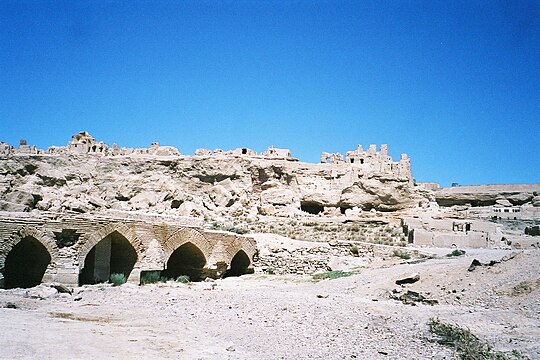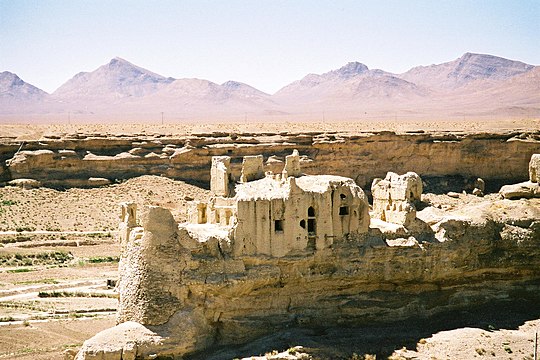Izadkhast Castle: A Historic Fortified Settlement in Iran
Visitor Information
Google Rating: 4.6
Popularity: Low
Google Maps: View on Google Maps
Country: Iran
Civilization: Unclassified
Remains: Military
History
Izadkhast Castle is located in the town of Izadkhast in modern-day Iran. It was originally built during the Sasanian Empire, which ruled from 224 to 651 AD. The site functioned as a fortified settlement along the ancient Silk Road, an important trade route that connected the cities of Shiraz and Isfahan in central Iran. During this time, it served both military and residential purposes, providing defense against potential invaders and housing a local population that included religious authorities and aristocrats.
Following the Islamic conquest of Iran in the 7th century, the castle’s role evolved along with wider cultural changes. Notably, the Sasanian fire temple within the complex was transformed into a mosque, reflecting the shift from Zoroastrianism to Islam. This continued use highlights the site’s enduring religious and social importance over centuries. From its initial construction through to the Qajar period (1794-1925), the castle saw various architectural additions and adaptations, demonstrating continuous habitation and strategic relevance.
The castle remained inhabited until recent decades but eventually was abandoned due to damage caused by natural forces like flooding and erosion. Official recognition came with its registration as a national heritage site of Iran in 2003, affirming its cultural significance. The fire temple, recognized earlier in 1948, is particularly noted for retaining key elements of its original Sasanian design. In 2007, the castle, along with its surrounding complex and a Safavid-era caravanserai nearby, was nominated to the UNESCO World Heritage Tentative List for its cultural value. Throughout modern history, visitors including travelers and photographers documented the site, with Theodore Bent among the notable figures to visit in 1889.
Remains
Izadkhast Castle is built on a natural sedimentary rock formation that rises between 6 and 15 meters above the valley, providing a strong defensive advantage. Three sides of the site are bounded by sheer cliffs, while the fourth side faces the ground level. Access to the complex’s main gate on this side is guarded by a narrow southern entrance reached by crossing a trench approximately 30 meters long, 4 meters wide and deep, which is spanned by a small bridge. This layout emphasizes security and control over entry.
The fortress stretches roughly 332 meters along its principal street, tapering from about 70 meters wide at the southern end to just 10 meters wide in the north. Within the walls, the residential buildings rise as high as five stories, reaching a maximum height of approximately 22 meters above the valley floor. The living quarters are tightly clustered, arranged along narrow, winding alleys with no internal courtyards; instead, the roofs of lower floors function as outdoor spaces, or courtyards, for the levels above. Wooden beams formed balconies along the outer walls facing the castle perimeter, traces of which remain visible today.
Constructed primarily from adobe, or sun-dried mud bricks, along with wooden structural elements, the castle’s architectural style reflects its Sasanian origins and the traditional building techniques of the region. Similar use of adobe and wood is seen in other historical sites like Arg-e Bam and Rayen Castle. Over time, the castle integrated Islamic architectural features, including the addition of a mosque and bathhouse, aligning with its religious transformation following the spread of Islam.
One of the most significant elements within the castle is the fire temple, distinguished by its four-arched design. Originally a place of worship for Zoroastrian priests known as mobeds, this structure was converted into a mosque after the Islamic conquest, preserving important features of its initial Sasanian layout. Today, it stands as a testament to the site’s layered religious history.
Surrounding Izadkhast Castle are the remains of other ancient fortresses and the ruins of a historical dam, highlighting the broader historical landscape of the area. Below the castle in the valley lies a Safavid-era caravanserai, a roadside inn that once provided lodging and rest for travelers and merchants along the Silk Road. This adds to the site’s long-standing role as a hub of trade and military defense.
Currently, the castle is in a state of gradual decline, affected by natural erosion, flood damage, and human activities such as vandalism and unauthorized treasure hunting. Some buildings near the main entrance have been completely destroyed, and many parts of the fortifications are deteriorating, underscoring the need for preservation efforts.




